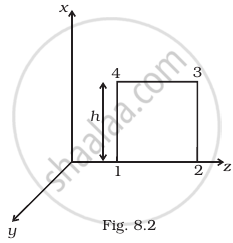Advertisements
Advertisements
प्रश्न
Which of the following is false for electromagnetic waves.
विकल्प
transverse
non-mechanical waves
longitudinal
produced by accelerating charges
उत्तर
longitudinal
APPEARS IN
संबंधित प्रश्न
Draw a schematic sketch of the electromagnetic waves propagating along the + x-axis. Indicate the directions of the electric and magnetic fields
How are electric vector `(vec "E")`, magnetic vector `(vec "B")` and velocity vector `(vec "C")` oriented in an electromagnetic wave?
Which mode of propagation is used by short wave broadcast serves?
Explain briefly how electromagnetic waves are produced by an oscillating charge. How is the frequency of the em waves produced related to that of the oscillating charge?
In a microwave oven, the food is kept in a plastic container and the microwaves is directed towards the food. The food is cooked without melting or igniting the plastic container. Explain.
A point charge is moving along a straight line with a constant velocity v. Consider a small area A perpendicular to the motion of the charge. Calculate the displacement current through the area when its distance from the charge is x. The value of x is not large, so that the electric field at any instant is essentially given by Coulomb's law.

Which of these mechanisms can be used to produce electromagnetic waves?
A plane electromagnetic wave travels in free space along x-axis. At a particular point in space, the electric field along y-axis is 9.3 Vm−1. The magnetic induction (B) along z-axis is:
Poynting vectors S is defined as a vector whose magnitude is equal to the wave intensity and whose direction is along the direction of wave propagation. Mathematically, it is given by `S = 1/mu_0 E xx B`. Show the nature of S vs t graph.
A plane EM wave travelling in vacuum along z direction is given by `E = E_0 sin(kz - ωt)hati` and `B = B_0 sin(kz - ωt)hatj`
- Evaluate `oint E.dl` over the rectangular loop 1234 shown in figure.
- Evaluate `int B.ds` over the surface bounded by loop 1234.
- Use equation `oint E.dl = (-dphi_B)/(dt)` to prove `E_0/B_0` = c.
- By using similar process and the equation `ointB.dl = mu_0I + ε_0 (dphi_E)/(dt)`, prove that c = `1/sqrt(mu_0ε_0)`

